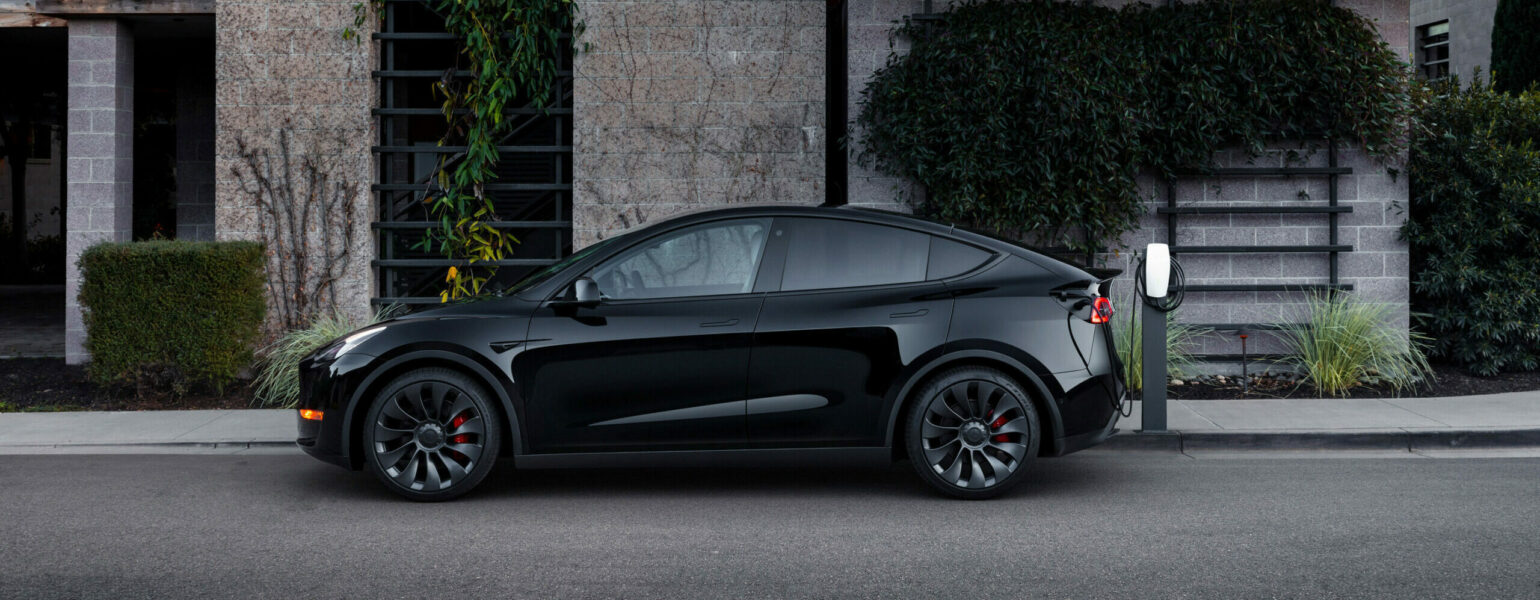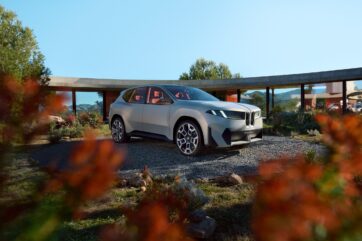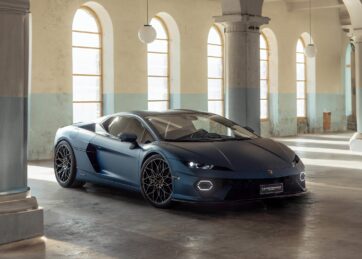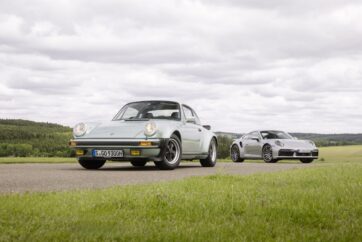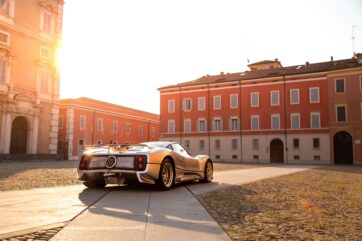
Is Old The New, New?
For a few years now manufacturers have been turning back the clock when releasing a new model and taken more than just inspiration from an iconic previous car from their back catalogue. Often it involves the same name, the same ideals and represents a vision at what that same car would look like if it was made today. It may seem like they’ve run out of ideas, but then again if the car was such a success in the first place, then why wouldn’t it work as well second time around. Here is our look at some of those cars that have been reborn for the 21st century:
Alfa Romeo 33 Stradale
The new flagship car from Alfa Romeo had been promised for months with teaser images and darkened silhouettes drip fed onto social media and motoring blogs. The final release at the end of August did not disappoint, with a homage to one of their most legendary and sought after cars, the 33 Stradale. Originally conceived as a road going version of their successful Tipo 33 racing car, the 1967 33 Stradale (Italian for ‘road-going’) was considered as one of the very first supercars. Using a mid-mounted racing developed 2.0-litre V8 engine that produced around 230bhp, its light weight meant it was one of the quickest cars of its time, as well as the most expensive. Just 18 original 33 Stradale’s were built and such is the rarity of them trading hands, the value is relatively unknown however has been estimated at over £10 million.
With such desirability for the original models, it makes sense for Alfa Romeo to attempt a modern interpretation of the 1960’s sports car. Visually it is clear to see the influence of the original model, with the same low front end with minimal grille, large headlight covers, side windows that extend into the roof line, upward hinged butterfly doors, large air intake to the rear wheel arches and even bronze painted wheels. The aesthetics may been the same but the mechanicals are certainly different. Firstly the combustion engine is a 3.0-litre V6 twin-turbo engine producing 620bhp, but there is also an electric only powerplant with 3 motors producing a combined 750bhp. The bespoke craftsmanship and artisan mindset remains to ensure that the car will feel just as special, whilst the limited production of 33 cars will mean that the exclusivity also remains.
Lamborghini Countach
Lamborghini have produced some of the most iconic cars of all time over the years, from the Miura of the 1960’s right through to the Murcielago and Aventador of recent times. One of the standout cars in that impressive back catalogue is the out of this world Countach of the mid 1970’s and 1980’s. When it was launched in 1974 it looked like something straight from the future, and even today seeing one on the public roads turns more heads than most other supercars. The most flamboyant of manufacturers went the extra mile and by the time production ended in 1990, it had evolved to have more air scoops, bigger wings and more extravagance than ever before.
As part of their ‘limited series’ range of cars, Lamborghini have reintroduced the Countach name and produced 112 units of their idea of a modern interpretation of the ultimate 80’s/90’s poster car. Following the wedge appearance with clean lines and the all-important trademark scissor doors, the latest Countach is instantly recognisable as a descendant of the original. This time powered by a version of the hybrid motor found in the Sián model, the Countach LP800-4 as the new one is called, comes with a 6.5-litre V12 engine with electric assistance to produce in excess of 800bhp.
Ferrari Daytona SP3
Despite the name, the latest Ferrari featuring ‘Daytona’ has nothing to do with the original grand tourer from the late 1960’s but taken from the 1967 24 Hours of Daytona. In this race, Ferrari took the top three places with arguably their greatest fleet of racing cars in the 330 P3/4, the 330 P4 and the 412 P. It was considered the golden age of sports prototype racing cars and a defining moment in the illustrious Ferrari motorsport history. As a result, though not strictly a modern version of just one car, Ferrari have introduced the Ferrari Daytona SP3 as a tribute to the closed wheel racers of the 1960’s and the spirit of those V12 sports prototypes.
As part of their limited series ‘Icona’ range, the SP3 takes inspiration from the classic lines of those cars, with sleek lines and the addition of horizontal strakes, a further nod to another legendary sports car of the 1990’s, the Testarossa. The voluptuous exterior bodywork features the same huge wheel arches as the 60’s racing cars, together with the canopy style wraparound glass windscreen and the flat rear engine cover with discreet lip spoiler at the back. With the 6.5 litre V12 producing around 830bhp, the car is racing car fast, even at today’s standards. The price tag of £1.7 million and limit production run of 599 cars ensures that the car will remain as exclusive for many years to come.
Shelby Cobra
The Cobra is one of the most important muscle cars to come out of the United States and gave birth to one of the most legendary names in the business, Shelby. Carroll Shelby has become synonymous with muscle car success both on the road and on the track, and his engineering knowhow was one of the best in the business. The Cobra is the perfect example of his ambition creating something truly special, shoehorning a 7.0 litre V8 engine of the later models into the small, lightweight shell of a British open top sports car. The Cobra was born and the rest is history.
Or it was, until now. The Shelby Cobra has returned for the 21st century with the Shelby Cobra CSX10000. Very similar looking but with entirely modern underpinnings, yet thankfully retaining a V8 engine from the latest Ford Mustang. If the 450bhp on offer however isn’t quite enough, they also produce a 3.0-litre supercharged version with 690bhp. The modern engineering means power steering, power-assisted brakes and 18” wheels instead of the original’s 15” wheels to ensure the car is easier to drive, whilst the dials and gauges have been faithfully recreated to look just like the ones in a 1960’s Cobra. The price for the new version may be just under £200,000 which seems like a lot, but a mid-1960’s Shelby Cobra 427 can easily fetch in excess of £1.5 million at auction, so a relative bargain for something that you’d be hard pressed to tell the difference between the two.
Prodrive Impreza P25
In the 1990’s and 2000’s the most iconic of all World Rally Championship cars was the Subaru Impreza. In the hands of such drivers as Colin McRae, Richard Burns and Petter Solberg, it was the fastest way to get across any terrain in any part of the world, and it just had to be seen with bright blue paintwork and gold wheels. The success of many World Rally Championship campaigns, including the Subaru Impreza’s victories, has been down to one of the greatest engineering firms in the game, Prodrive. Their list of accolades across many forms of motorsport is enough to compete with the very best and their knowledge of building successful cars is second to none.
Prodrive have taken that ever evolving motorsport knowledge and decided to bring one of their greatest creations bang up to date with a new lease of live in the Impreza P25. The limited production run P25 is aimed at creating the ultimate road going Impreza, and claim ‘little will be able to match its performance on the open road’. Replacing much of the body panels with carbon composite bodywork, as well as interior carbon parts has meant that the car weighs less than 1,200kg. The 2.5-litre Prodrive-built turbocharged boxer engine now produces 450bhp, whilst the latest differentials, dampers and brake technology ensures the P25 takes the Impreza to whole new levels of performance. Just 25 examples will be built and the price for the ultimate Impreza is over £550,000. Not that it has stopped all of them selling out in an instant, reportedly one customer even bought 2 of them.
Porsche 911 Dakar
The Porsche 911 has been around for 60 years this year and over that time has seen many various models and iterations from a base Carrera to a Turbo S, to a GT3 or even GT3 RS, a Targa, a Cabriolet, and many versions in between. None, however, were as unique and as out of their comfort zone as the 953 of 1984. A heavily modified variant of the 911, the 953 (also known as the 911 4×4) was built specifically to compete at the fearsome Paris-Dakar Rally and was essentially a precursor to what became the 959. Using an experimental 4-wheel drive system, enhanced suspension, tougher underbody and a 300bhp 6-cylinder engine, the 953 lifeline was short lived but very successful, finishing first overall.
As a tribute to that outlandish but successful one-off creation, Porsche have decided to produce a version based on their latest 992 generation of 911. Taking a Carrera 4 GTS as a base car that comes with a 475bhp 3.0-litre twin-turbocharged flat-six engine, then adding 50mm to the suspension travel, knobbly tyres, wheel arch extensions, underbody stainless steel cladding, carbon fibre parts from the GT3 and options such as a roof rack, spotlights, even a spade and exterior mounted fuel canister. The 911 Dakar isn’t just a decorated Coupe to look like it means business, it is built to actually perform off road, just like the original.
Volkswagen ID Buzz
The Volkswagen Microbus/Transporter/Type 2/Kombi is one of the most iconic vehicles ever made, and its following continues to grow even today. The wraparound windows, the split front windscreen, the two-tone colour combinations, the endless configurations available and the oversized Volkswagen badge that adorns the front are what makes the VW Bus an instantly recognisable piece of motoring history. VW have been sharing plans and teasing concepts of a new version for many years, but only now have they created a successor that visually at least takes more than just inspiration from the original.
Despite now being fully electric powered, the ID Buzz is clearly a modern interpretation of that iconic vehicle that can trace it roots back to the 1940’s. The crease in the front that carries the split in the two-tone paintwork all the way round the bodywork remains, despite losing its trademark ‘V’ shape, and the badge on the front may have shrunk considerably, but it carries more than enough of the original styling cues to be considered retro in styling. The configurations and customisable potential remain a great selling point, as does the possibilities to be specified as a van or a passenger vehicle, and despite the change in propulsion and significant price rise, the ID Buzz is a welcome nostalgic addition to the sometimes monotonous commercial/passenger vehicle landscape.
Ferrari Monza SP1/2
As part of the aforementioned limited addition ‘Icona’ range from Ferrari, the SP1 and SP2 cars go even further to recreate the ethos of racing cars from a bygone era. Whilst the SP3 takes inspiration from the sports prototypes of the late 1960’s, the SP1 and SP2 are influenced by barchettas (or open top racers) of the 1950’s. A time when the ‘gentleman driver’ in his private car raced wheel to wheel with official works team Scuderia entries and some of the most legendary names of the era.
The racing cars of the period had no roof or weather shielding, very little or no windscreen protection and often a tonneau cover for the passenger side. The SP1 and SP2 models follow that ideal with the option for single seat (SP1) or two-seater (SP2) cars and have no roof or windscreen. The voluptuous bodywork is said to be ‘sculpted by the wind’ and despite borrowing no nostalgic references or design cues from the past, are unmistakably based on the sleek lines and minimalist silhouettes of the original barchettas. Utilising the 6.5 litre naturally aspirated V12 from the 812 Superfast ensures that the car performs like a racing car, with almost 800bhp to ensure the use of a helmet might offset the lack of windscreen.
Why Choose Oracle?
With over 1,800 Trustpilot reviews and a rating of 5 out of 5, and four-time consecutive award winners of the Best Specialist Car Finance Provider award from 2020 through to 2023, as well as having funded over £1.7 billion of vehicles and counting, you too can find out why thousands of people trust us time and time again to find a smarter, tailored funding solution when looking for your next dream car.
Make sure you follow us on Instagram, LinkedIn and Facebook to keep up to date with what’s happening in the market and to see some stunning photos and videos of the amazing cars we fund.
